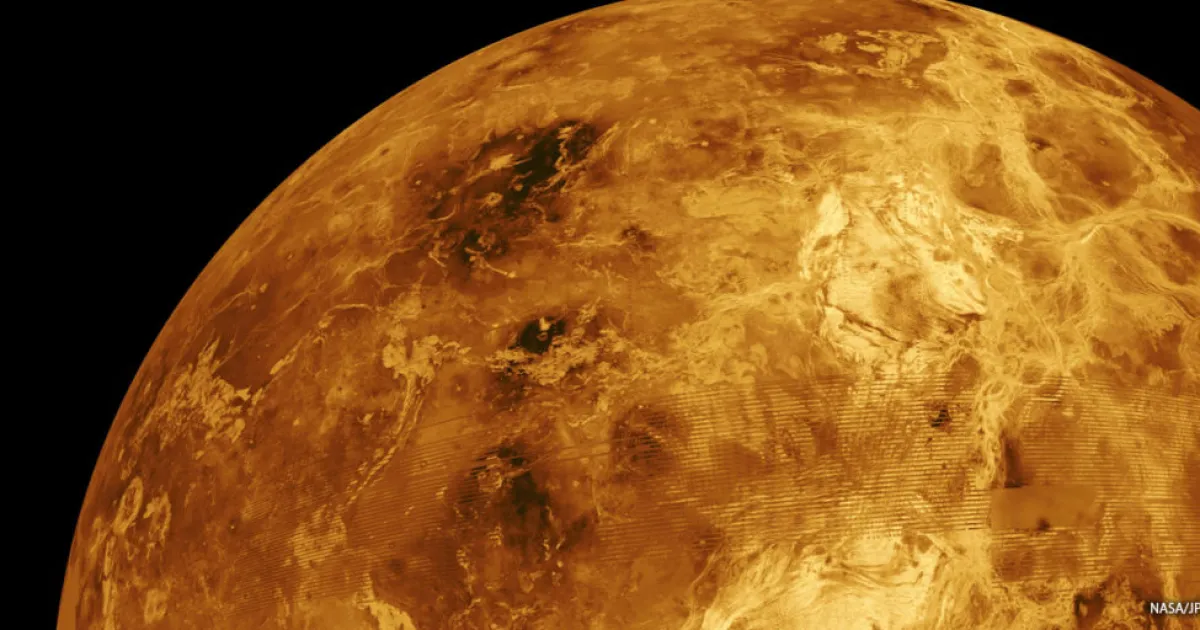
For the first time, atomic oxygen has been directly detected in Venus’s atmosphere, on the side facing the sun, offering new insights into its composition and the processes at play in this alien environment.
Oxygen is a familiar and vital component of Earth’s atmosphere, comprising about 21% of the air we breathe (the majority is actually nitrogen). Venus, in contrast, exhibits a strikingly different atmospheric composition with a staggering 96.5% carbon dioxide concentration. The planet’s atmosphere also contains small amounts of nitrogen and trace gases, with oxygen almost absent.
The presence of oxygen, reported in Nature Communications as part of a joint project between NASA and the German Aerospace Center, was detected on both the day and night sides of Venus using the SOFIA (Stratospheric Observatory For Infrared Astronomy) airborne observatory — a Boeing 747SP aircraft modified to carry an infrared telescope.
Up to about 40 miles (65 km) above Venus’s surface, a layer of clouds contains sulfuric acid. Here, hurricane-force winds blow in the opposite direction of Venus’s rotation. Move up to about 75 miles (120 km), and strong winds blow in the same direction as the planet’s rotation. Sandwiched between these two opposing layers is the newfound oxygen.
On Venus’s day side, the oxygen’s temperature comes in at approximately -184 degrees Fahrenheit (-120 degrees Celsius). It’s even chillier on its night side, which lingers at -256 degrees Fahrenheit (-160 degrees Celsius).
“The Venus atmosphere is very dense. The composition is also very different from Earth,” said German Aerospace Center physicist Heinz-Wilhelm Hübers, lead author of the study. “Venus is not hospitable, at least for organisms we know from Earth.”
Venus, often termed Earth’s twin due to its similar size, showcases an extreme environment. Its dense atmosphere results in a runaway greenhouse effect, trapping heat and making the planet inhospitable to life as we know it.
Take the Venera spacecraft program as an example of the planet’s hellish conditions. Between 1961 and 1983, the Russians sent 28 Venera spacecraft to Venus. Thirteen of these entered the Venusian atmosphere, eight of which touched down. Most sent back important data, however, all were crushed and melted within several minutes after landing on the surface.
The presence of atomic oxygen is primarily due to the action of ultraviolet radiation from the Sun, which breaks down atmospheric carbon dioxide and carbon monoxide. This process, known as photochemistry, is similar to what occurs in Earth’s stratospheric ozone layer. Although the end products and environmental impacts are vastly different.
“This detection of atomic oxygen on Venus is direct proof for the action of photochemistry – triggered by solar UV radiation – and for the transport of its products by the winds of Venus’ atmosphere,” said astrophysicist and study co-author Helmut Wiesemeyer of the Max Planck Institute for Radio Astronomy. On Earth, our life-protecting stratospheric ozone layer represents a well-known example of such photochemistry,
Studying Venus, particularly its atmospheric composition, is crucial to understanding how it evolved so differently from Earth, despite their similarities in size and proximity to the Sun.
Hübers says we still have hardly hit the surface of the planet’s exploration. However, this discovery is a great continuation.
“We are still at the beginning of understanding the evolution of Venus and why it is so different from Earth.”






